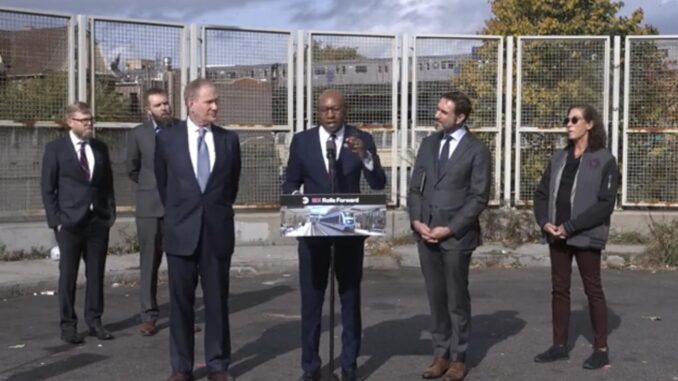
By SAMUEL MORTEL
New York City transportation is in a painful period. Since the end of the Cuomo-De Blasio era, there’s been no shortage of ambitious ideas from Governor Kathy Hochul and Mayor Eric Adams to greatly reimagine the city’s infrastructure and economy. But these ideas are prone to roadblocks and resistance, as with Adams’s City Of Yes proposal. The Interborough Express could be just another victim of the friction that comes with trying to transform one Earth’s largest, most complex cities. But public officials are determined to move the project ahead.
The Interborough Express, also known as the IBX, has been a long-time goal for Governor Kathy Hochul dating to her 2022 State of the State address. In January 2023, she announced that the project would run on a light-rail line, intending for the tram to run along Metropolitan Ave and 69th Street.
Although light-rail isn’t a new or unusual form of transportation in other cities, it is for New York. The IBX would be the first of its kind in NYC, and that’s something that some critics fear the city may not be prepared for.
Skeptics voiced concerns about a train line segment in the middle of a busy street.
it seems as if the MTA and New York government heard these concerns loud and clear.
On October 29th, Queens Borough President Donovan Richards hosted a press conference with MTA higher ups to give updates on the development of the IBX. The controversial concept to have the IBX run through the streets of Queens and Brooklyn has been scrapped, with the MTA instead deciding to have the light-rail line run through a proposed tunnel underneath a Middle Village cemetery.
This is an interesting turn of events, as the MTA’s previous plan to have the line run along the street was in part to avoid interfering with this cemetery and disrupting the site of over 500,000 burials. MTA Chairman Janno Lieber was asked how the agency was able to find a solution to interfering with the graves. Lieber avoided providing a direct answer, instead shifting to tout how this new plan will reduce travel time and avoid conflicting with automobiles on the street.
“We’re looking at a tunnel at Metropolitan Avenue that will allow us to avoid street running to make the IBX faster and more reliable,” Jamie Torres-Springer, MTA President of Construction and Development said earlier in the conference. “This will save every rider a few minutes and enable us to run in a dedicated right of way the whole 14 miles which brings us a whole lot of efficiency.” Chairman Lieber later clarified that the new concept would cut “five minutes or more” off the previously estimated 40 minute ride.
“We’re taking an underutilized freight train line -– basically only gets one freight train a day — and we’re turning into something that’s transformative for many New Yorkers,” said Lieber. “It makes no sense that the 5 million people who live in Brooklyn and Queens have to go to Manhattan on the subway to reach the other borough. Makes no sense.”
“We’re all mindful of the fact that the congestion pricing pause is in effect, but we were able to get some money from the state of New York to keep this project moving forward at least at the design stage and, too, we got some funding from our federal partners,” Leiber said. He made sure to give a shout out to Senate Majority Leader Chuck Schumer (who he called New York’s “guardian angel in Washington”) and President Joe Biden.
A core justification for congestion pricing was to rake in an extra $1 billion per year, which would serve as the largest source of funding for the MTA. This money would have been used to expand, improve, and maintain public transportation, including proposals such as the IBX.
The IBX has had to rely instead on a $68 billion capital plan that was approved by the MTA Board last month. In lieu of congestion pricing, this extra burst in funding was desperately needed by the MTA in order to keep the dream of the IBX afloat.
As of now, the MTA is still yet to begin the preliminary design process, with part of the press conference earlier this week being a call for bidders and contractors. The designing and engineering process alone is estimated to take two years.
